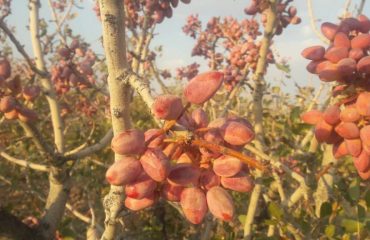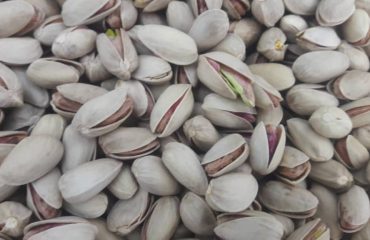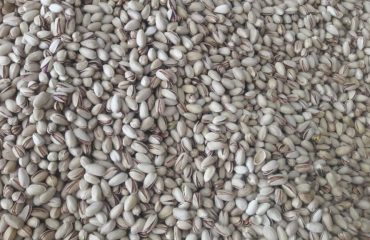The European Union is the largest buyer of Iranian pistachios compared to American pistachios. The European Union (28 countries) is the largest target for the export of tree nuts from the United States, with 32% of total purchases of dried fruits produced in the United States in 2017, as well as its largest share in the purchase of Iranian pistachios.
The share of East Asian countries in the import of tree nuts was 27% and in the Middle East 12%. In 2017, the value of dried fruit exports to the EU reached $ 2.7 billion.
Dried almonds (in shells and kernels) sold for $ 1.5 billion, dried pistachios ($ 44.6 million) and walnuts for $ 344 million in the European market. In the European Union, the most important destinations for American pistachios are Spain, Germany and the Netherlands, which account for 63% of total imports to Europe.
The United States is Europe’s largest supplier of tree nuts. In 2017, the main market share in Europe was 37%. Turkey has the second largest share of the European market (20%), followed by Vietnam, Chile and India, and almonds are still the main commodity, accounting for 22% of total dried fruit imports to the EU.
Main buyers of tree nuts: food industry and nuts industry
Nuts and food processing industries in Europe are the largest consumers of tree nuts in Europe. These industries use cookies in traditional foods as well as their recycling and re-export to third world countries.
Almonds are mostly used as a substance in the production of marzipan, nougat, toron (Spanish Christmas food), sweets and pastries. European growers use pistachios and walnuts for ice cream and confectionery.
The European food and nutrition industry is constantly trying to offer new products and methods for consuming more nuts. However, introducing new products in traditional markets such as Spain and Italy is not an easy task. In these markets, consumers often prefer their own local and regional food products.
Due to the large European market, food retailers are focused on developing strategies to produce new value-added products in order to sell more goods in bulk. They also try to showcase the nutritional value and benefits of fruit trees through advertising campaigns and new packaging.
Expansion of trade in the EU market
Since the European Union is a major exporter of tree seeds, American exporters are always looking to expand their trade with these countries.
Trade fairs are a golden opportunity to learn about this market and meet secret importers. Some of the most important trade fairs in Europe dealing with tree plants are shown in Table 1.
Exporters who have recently entered the food trade are advised to refer to FAIRS reports (including standards and regulations on food and agriculture imports to the EU) to learn more about EU food regulations and market opportunities. Europe) refer.
American activists in the European Union
Associations such as the California Almond Association (ABC), the American Pistachio Association (APG) and the Cancer Commission (CWC) have always sought to develop business strategies in the EU market.
These unions or industry activists, in collaboration with agricultural service offices across Europe, are always looking to increase market opportunities for tree products.
Italian pistachio is a traditional European product
Pistachio in Italy is a traditional product, especially in Sicily (Bronte region), which supplies 90% of Italian pistachios. In recent years, pistachio production has expanded to other parts of Sicily and Basilicata.
Newer and more efficient gardens are being built in these areas. Bianca (or Napoleon) is the main pistachio in Italy, usually harvested in September. Since 2004, the European Commission has awarded the Brontot pistachio the PDO (Designation of Origin Protection) mark, distinguishing it from other pistachios in the world.
Spanish pistachio is a native product
Spanish consumer interest in pistachios is growing, and pistachio production in Spain is growing rapidly. It is true that pistachios are not a common commodity in Spain, but the high profitability and high demand for this product in the last 10 years has led to a significant increase in the level of pistachio cultivation in Spain.
Native pistachio production is still low but expanding. The Castile-La Mancha region has the largest increase in pistachio production. Expanding pistachio cultivation is a long-term investment that is expected to continue.
Pistachio harvest for use in Europe
Pistachio production in the EU does not cover domestic demand, so significant amounts of pistachios are imported into the EU from Iran and the United States.
Pistachios are consumed in various forms in Europe, using dried pistachios (with skin) as nuts, for pistachio kernels for consumption in restaurants, cakes, pastries and other food industries, and green pistachio powder and pistachio paste in ice cream.
Pistachio trade in the European market
The European Union is one of the main importers of pistachios in the world. Iranian and US pistachios have the largest share in the European pistachio market. Together, the two countries account for more than 90% of total pistachio imports to Europe.
In the EU market, the purchase of Iranian pistachios is the main competitor of the United States. The flavor of Iranian pistachios is still better than American pistachios and this is the most important advantage of Iranian pistachios
Pistachio exports from the EU are very low. The main targets of pistachios produced in 28 EU countries in 2016 were the independent cities of Mellá and Monte Carlo in Spain.
Ranking of global pistachio producers
The Islamic Republic of Iran and the United States are at the top of the world in pistachio production and breeding. Turkey and Syria are next in pistachio production after Iran and the United States.
Countries such as Afghanistan, Argentina, Australia, Greece, Jordan, Italy, Madagascar, Spain, Tunisia, China, Australia, Kyrgyzstan and Uzbekistan also produce pistachios. But most of their products are consumed locally or some of them are exported to the countries of the region.
In general, pistachio-producing countries are not thought to be importers, but statistics still show that the United States and Iran are both importers of pistachios. But we know that Iran, after a little processing on pistachios, exports its imported pistachios again.
Major importers of pistachios
The largest import markets for pistachios are Hong Kong, China, Canada, Germany, Belgium, the Netherlands and Russia. Not all countries have direct imports from pistachio producing countries and it will not be affordable for them. Hong Kong, as the largest importer of pistachios, has a key position in the global pistachio trade.
Hong Kong is a gateway to import goods to China and also re-exports goods from China to other countries. Germany, Belgium, Luxembourg and the United Arab Emirates do the same and are next in line.
Global pistachio production in 2015-2016 exceeded 524,000 tons, which has grown by 24% compared to the same period in the last 10 years, ie around 2005-2006, now pistachio production to 1.1 million tons Has increased by 3.29% since 1997.
Global production In 2016, Iran produced 210,000 tons (40% of world pistachio production), followed by Turkey with 145,000 tons (28%) and the United States with 127,000 tons (24%). As the largest pistachio producing countries, they supply about 92% of the world’s pistachios.
Iran ranks world in pistachio production
According to statistics released by the FAO, the United States produces 406,000 tons of pistachios annually in the world and is the world’s largest producer of this product.
Iran is in second place with a production of 315,000 tons of pistachios. Iran’s closest competitor is Turkey with a production of 170,000 tons. China is expected to pose a serious threat to Iran and the United States with its production-boosting policy, which has tripled in four years.
Rafsanjan and Sirjan pistachio site, with years of experience in buying and selling pistachios and offering products in accordance with international standards and gaining the trust of its customers across the country, is ready to offer the best type of pistachios to our dear compatriots.
We will do our best to help improve the quality of Iran’s agricultural inputs. We try to introduce the best of agriculture.




